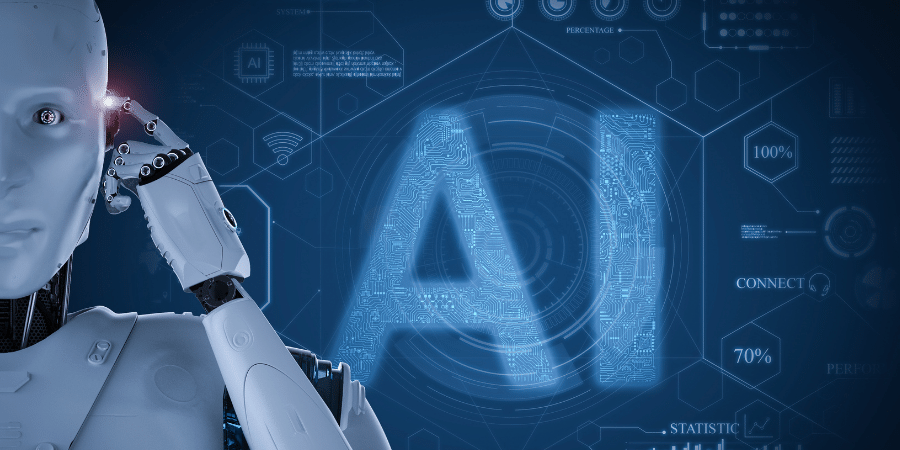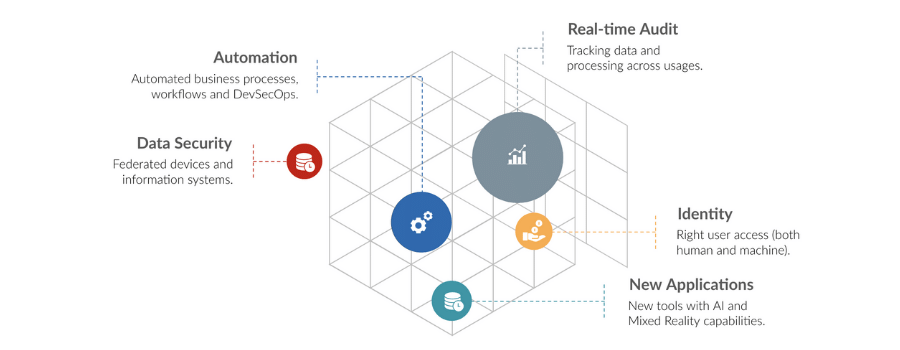
It is always amazing to see how we innovate in the face of a crisis. Sewing machines went active to create masks in our homes when lockdown happened. We started speaking with our family members all of a sudden during this period. Now we know what they prefer to eat and many intimate things which we had ignored for years. Another thing happened: the use of AI went viral in magnitude like coronavirus.
It is not that the importance of AI was not being emphasised before COVID-19. It was. Many conferences, academic and business literature, can stand witness to this. But during the last several months, amidst COVID, we are more convinced about the critical role of AI in the business than before. This phenomenon will have a significant impact on how we do business from now onwards.
A widespread change is doing work from home. In my book on Cloud Computing some eight years ago, I emphasised a norm that will set in eventually - access from anywhere apart from access with any device and access anytime. Well, with lockdown and the restricted movements later, all these became so practical! The Indian government has now made this mode of work legal for the ITeS sector. Many new things have unfolded due to this model of working. The reason for mentioning these is that the change has not happened only in the way we work today, but also plenty of software powered by AI has appeared. Many existing software systems are fast evolving - using almost all three aspects of AI - Machine Learning, Computer Vision and Natural Language Processing. AI is being exploited for both work process management and workforce management.
AI is being exploited for both work process management and workforce management.
COVID-19 saw a greater reliance on Work from Home (though its efficacy along different work categories is to be understood better in the coming months) and digital supply chain backbone and online commerce. Earlier, we considered digital communication as a valued augmentation, but the communication has turned digital-first. With workers staying at home or with the unavailability of human resources, companies have started depending heavily on chatbots and virtual assistants - all AI products. In fact, a forward-looking evolution of remote communication is a reality now - this is to achieve telerobotic presence where you control a robot remotely, which will represent the participant. The robot can move on the factory floor or in a conference hall interacting on your behalf, yet controlled by you remotely—a triumph of AI.
While there are restrictions in travel, the globalised economy has got support from large-scale cloud-based digital supply chain and digital transaction process. We have now learned the efficacy of digital backbone for connecting businesses worldwide through a set of distributed small and big supply chains - all managed digitally. These will not be restricted to logistics - instead, they will include research, innovations, services, and productions.
Changes have started in almost all sectors - be it Space exploration and research or defence, the major thrust is unmanned (no gender bias) and auto-piloted activities. Roboships will become a reality on the sea. An AI-powered ship, the autonomous Mayflower ship, will sail from England to the USA to commemorate the 400th anniversary of the legendary Ship Mayflower. It will usher in the possibility of a new chapter of the transportation industry. Because much of our business activities happen outside the lands, including the Internet backbone - those cables stretched between continents. Similarly, all current space missions heavily use AI. In Australia, auto-piloted fighter jets are on their way to join human-driven jets.

A model of Mayflower II built by the renowned ship model builder Erik A. R. Ronnberg, in the 20th century. This model reminds and celebrates the voyage of the legendary Mayflower. I took this photograph in the museum during one of my visit to Plymouth, Massachusetts (USA).
I cannot overemphasise the role of AI in doing the Phylogenetic study of Coronavirus. Screening, analysing, predicting and tracking current and future patients - all buzz of AI in health-tech will start becoming a reality quickly.
Now, how should we see these in perspective? The success of a technology or the specific failures by the practitioners? It should be both. The technology can fail. There are many failed incidents, but technology never stops evolving, nor its usage stops growing. The 1986 Challenger spaceship disaster did not stop space missions. However, the state of AI is in its infancy, in my opinion, and there is a long path before it is reliable and can run without any human assistance. Currently, technology products use AI to eliminate repetitive tasks and human-effort-centric tasks. As of now, an intelligent human has not found a replacement in silicon. If you look at autonomous vehicles, many more humans are working behind the scene to make the machine work. The number of people needed is undoubtedly larger than those operating a classic car. The skills requirements from the people crewing smart vehicles are much greater. So, AI is a job creator - creating new jobs with new skills.
Before I wrap up my discussion, let me elaborate a bit about what is changing on the ground due to the intervention of AI. We see a clear transition from vanilla server systems to manage business processes to a cloud-native scenario. More and more business activities are going out of the trusted network - the cosy and trusted enclosures of our on-premises servers.

AI changes the character of the software applications
When we talk of software applications today, these must accommodate features like AI and AR/VR capabilities. Being available at a global scale and significant investments that go into, these systems are delivered in the SaaS model. We are using more Robotics Process Automation for various business functions. The low-code platform and automation of DevSecOps have seen a significant increase recently. Development-and-Security-Operation or DevSecOps is a holy-grail for the approach to software making - integrating aspirations and spirit of business operation into software development and security.
So, this scenario creates an ample opportunity for the growth of computing in business - like never before. Of course, the most critical aspect of all these revisions to software making and usages, as I have mentioned, is the security of the digital infrastructure. Servers, network devices, laptops and mobile phones used by business users, IoT devices sitting elsewhere - all will be affected. Thus, the security paradigm is seeing and will see a significant transformation, too, with new automation tools and standards in place. AI is being used primarily in all these processes - when experts say automation today; they invariably point to the use of AI. All these will revolutionise the computing ahead and provide the impetus for industry 4.0 and make it mainstream.
Closing my remarks, I would like to agree that AI is one of the best gifts for humanity. But then it has all the capabilities to turn into Pandora’s box - may be the next topic on some other day.


























 Ashwini Kumar Rath
Ashwini Kumar Rath